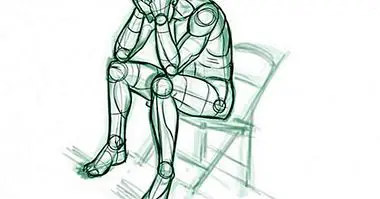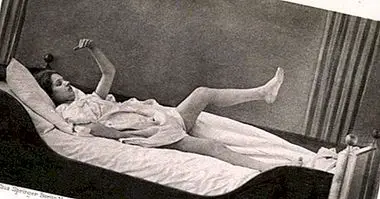Adaptation disorder: causes, symptoms and treatment
The adaptive disorders or adjustment disorders appeared for the first time in the third edition of the Statistical Diagnostic Manual of Mental Disorders (DSM-III) and just after they appeared in the International Classification of Diseases (ICD-9).
This inclusion involved the recognition that some individuals may develop psychological symptoms or exhibit behaviors that occur in a short space of time in response to different stressful events. The consequences are also manifested by functional impairment (social or occupational), and the most common psychological symptoms are depression or anxiety.
Definition of Adaptive Disorders
The DSM-IV defines adaptive disorders as: "emotional or behavioral symptoms in response to an identifiable stressor that occurs within three months of the presence of the stressful situation. These symptoms or behaviors are clinically significant as evidenced by a greater discomfort than would be expected from the stressor or from a significant impairment of social or work (or academic) activity. "
The definition excludes the diagnosis of this disorder if there is another pathology that may be causing the symptoms. The adjustment disorder can be classified as acute or chronic. Within each form there are different types, such as the anxious or the depressive.
In the case of ICD-10, It is a requirement that the symptoms occur before one month of the appearance of the stressful phenomenon, whereas according to the DSM-IV the requirement is three months . In addition, the latter reports that symptoms must remit at six months, although, as mentioned, he also recognizes that there may be a chronic form as a consequence of prolonged exposure to a stressor. For example, the loss of work can lead to the loss of the house and, therefore, the separation of the marriage.
The diagnosis of this disorder has caused some controversy. One of the most important dilemmas is the distinction of the normal reaction to stress. Something that becomes inevitable so as not to pathologize the day to day of people and the normal setbacks that may arise.
Subtypes of adjustment disorders
There are different subtypes characterized by the symptoms presented by patients with this psychopathology.
- Depressive subtype : There is a predominance of characteristic symptoms of low mood, such as crying or despair.
- Anxious subtype : Characterized by symptoms associated with anxiety: nervousness, irritability, etc.
- Mixed subtype with anxiety and depressed mood : Individuals present symptoms of the previous subtypes.
- With behavioral disorder : There is an alteration in behavior, in which the rights of others or of social norms and rules, characteristics of age, are violated.
- With mixed alteration of emotions and behavior : There are emotional and behavioral alterations.
- Not specified : Maladaptive reactions to stressors that are not classifiable in the other subtypes.
Differential diagnosis: adaptive disorder must be differentiated from post-traumatic stress disorder
The differential diagnosis is important, because in addition to ruling out other disorders such as dysthymia or generalized anxiety disorder, which last more than six months, the adaptive disorder must be differentiated from post-traumatic stress disorder (PTSD).
The main difference with the latter is that the symptoms of PTSD manifest with the reexperience of the traumatic event, but, on the other hand, the adaptive disorder must be preceded by a stressor or by a set of them .
Treatment of adjustment disorders
The choice of appropriate treatment is a clinical decision in which the patient's history is taken into account. There is no consensus at present regarding the optimal treatment, but Different forms of psychotherapy have shown their effectiveness . Sometimes drugs can also be administered to reduce symptoms.
Psychopharmacology
The use of drugs should never be the first choice in the treatment, since the patient will not improve if the problem is not attacked in its entirety. But sometimes, to reduce discomfort, the patient can take small doses of anxiolytics such as Diazepam or Alprazolam. In case of insomnia, Flunitrazepam usually works very well. In cases of low mood, antidepressants such as Fluoxetine (Prozac) can reduce negative symptoms.
Psychotherapy
Because the adjustment disorder does not last long, usually Brief psychotherapy is preferred and not long term . Psychological therapy is useful for the following reasons:
- To analyze the stressors that affect the patient
- To help the patient interpret the meaning of the stressor in a more adaptive way
- To help the patient talk about the problems and conflicts he experiences
- To identify how to reduce the stressor factor
- To maximize the patient's coping skills (emotional self-regulation, avoidance of inappropriate behavior, especially substance abuse).
Some F forms of psychotherapy What can be effective are the following:
- Cognitive behavioral therapy (CBT)
- Family and group therapies (specific support for the stressor)
- Mindfulness therapy



















